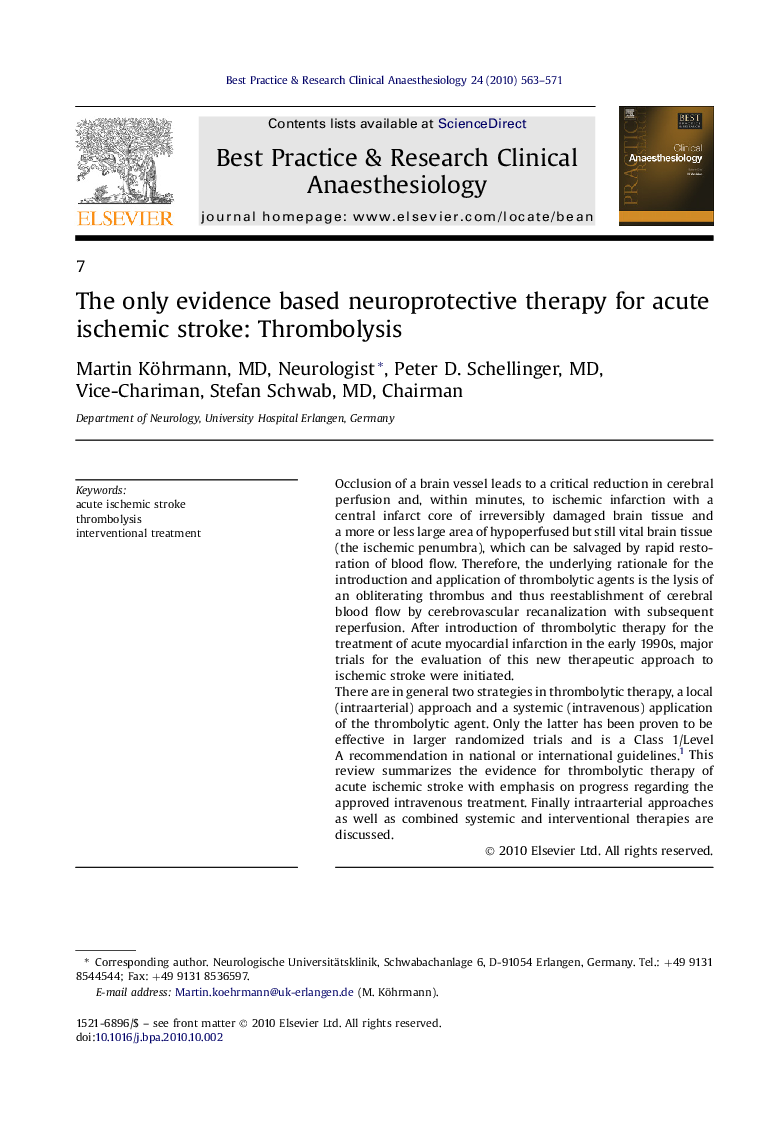| Article ID | Journal | Published Year | Pages | File Type |
|---|---|---|---|---|
| 2748598 | Best Practice & Research Clinical Anaesthesiology | 2010 | 9 Pages |
Occlusion of a brain vessel leads to a critical reduction in cerebral perfusion and, within minutes, to ischemic infarction with a central infarct core of irreversibly damaged brain tissue and a more or less large area of hypoperfused but still vital brain tissue (the ischemic penumbra), which can be salvaged by rapid restoration of blood flow. Therefore, the underlying rationale for the introduction and application of thrombolytic agents is the lysis of an obliterating thrombus and thus reestablishment of cerebral blood flow by cerebrovascular recanalization with subsequent reperfusion. After introduction of thrombolytic therapy for the treatment of acute myocardial infarction in the early 1990s, major trials for the evaluation of this new therapeutic approach to ischemic stroke were initiated.There are in general two strategies in thrombolytic therapy, a local (intraarterial) approach and a systemic (intravenous) application of the thrombolytic agent. Only the latter has been proven to be effective in larger randomized trials and is a Class 1/Level A recommendation in national or international guidelines.1 This review summarizes the evidence for thrombolytic therapy of acute ischemic stroke with emphasis on progress regarding the approved intravenous treatment. Finally intraarterial approaches as well as combined systemic and interventional therapies are discussed.
